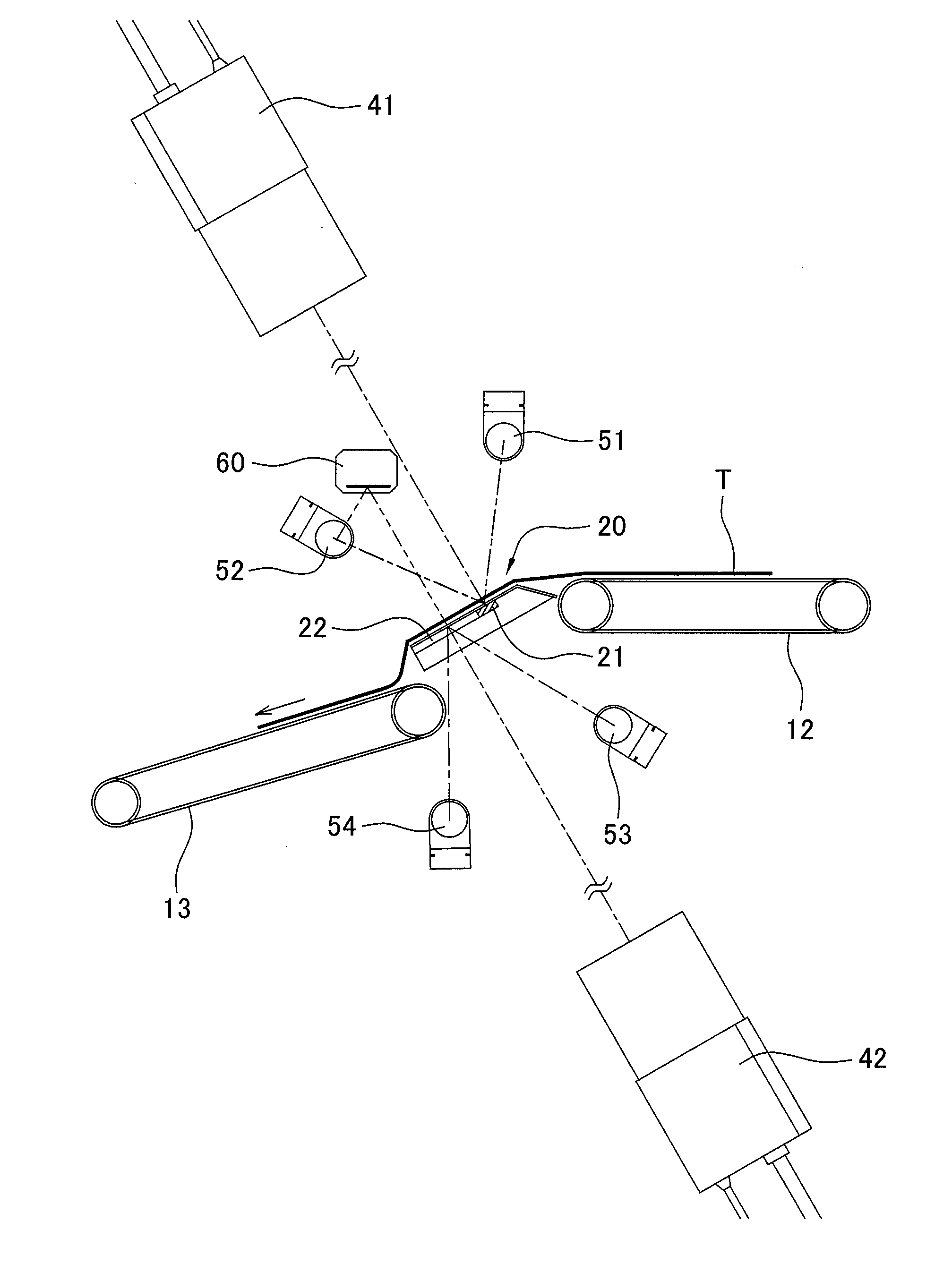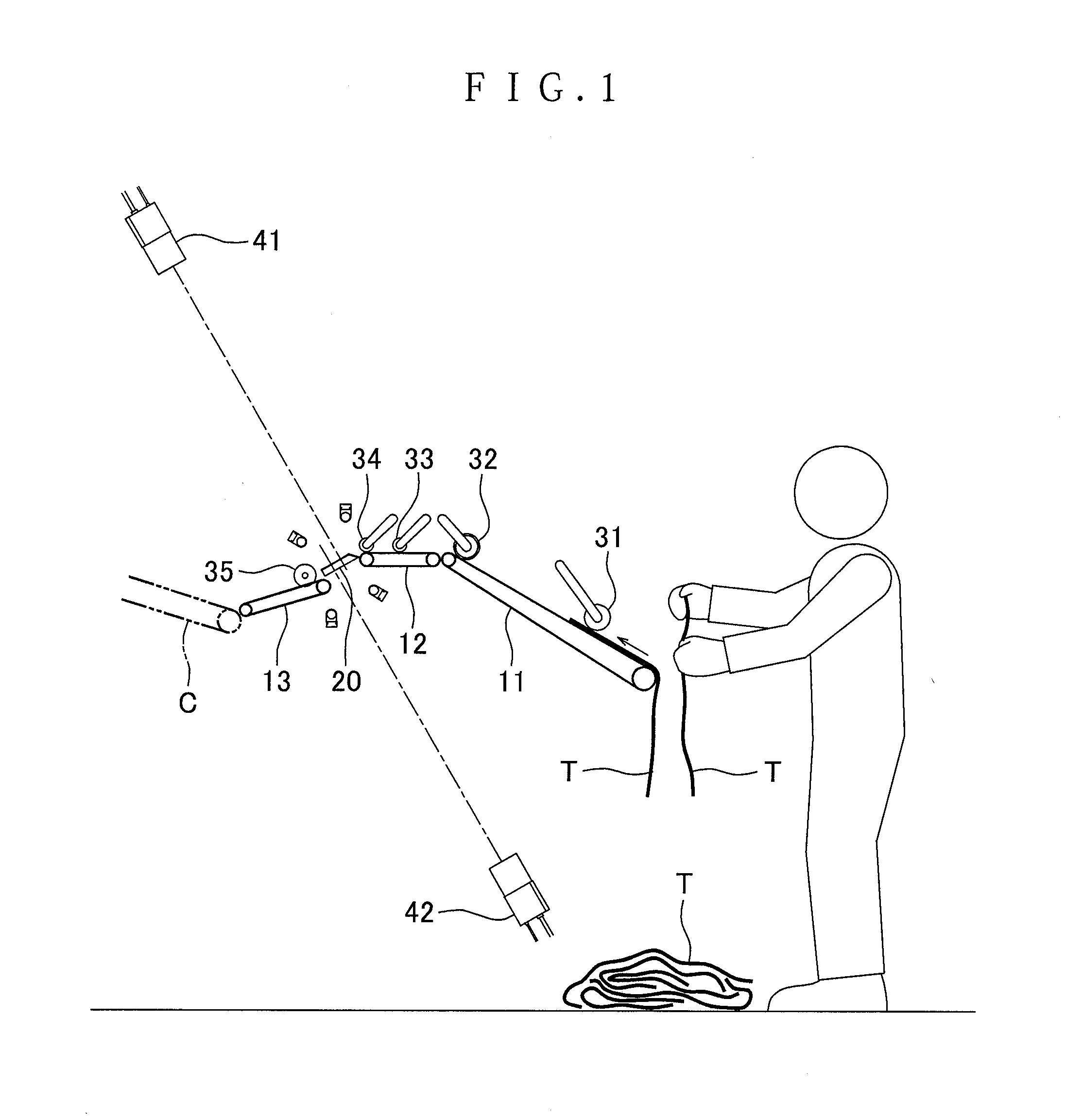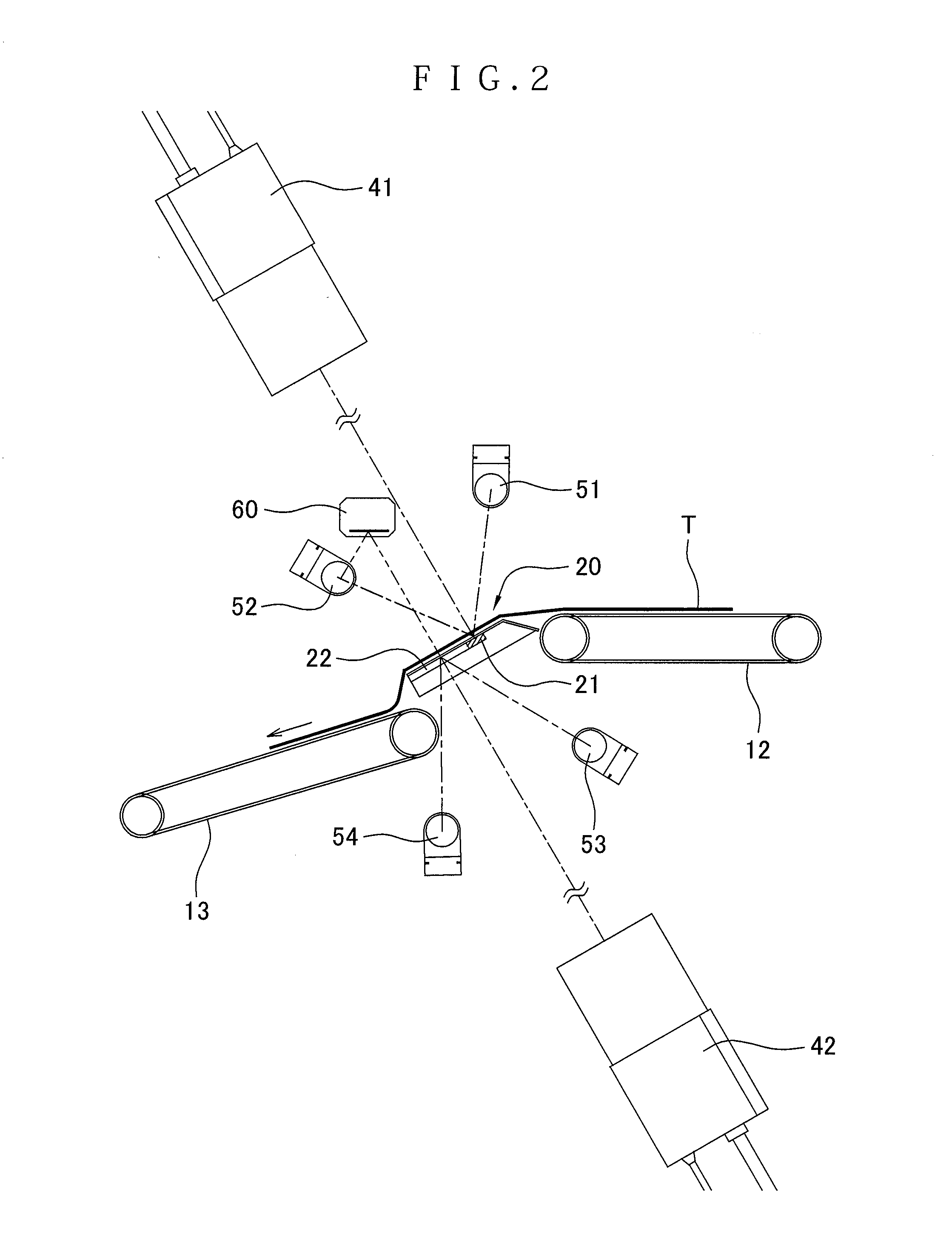Apparatus and method for inspecting cloth piece
a cloth piece and cloth cloth technology, applied in the field of cloth cloth piece apparatus and cloth cloth piece inspection apparatus, can solve the problems of difficult to detect dirt, cloth piece with tear may be subjected to rewashing, etc., and achieve the effects of high accuracy of dirt detection, excellent processing efficiency, and reliable distinction
- Summary
- Abstract
- Description
- Claims
- Application Information
AI Technical Summary
Benefits of technology
Problems solved by technology
Method used
Image
Examples
first embodiment
[0030]As show in FIG. 1, an apparatus for inspecting a cloth piece according to a first embodiment of the present invention is integrated with an apparatus for smoothing out a crease in a cloth piece, and includes a first conveyor 11, a second conveyor 12 and a third conveyor 13, each of which is fixed by a not-shown frame.
[0031]The first conveyor 11 is a conveyor on which a worker put a cloth piece T such as a washed and dried towel. A front end (a right end in FIG. 1) of the conveyor 11 is approximately as high as a waist of the worker so that the worker easily puts the cloth piece T thereon. An inclination of the first conveyor 11 causes a put-on face to face the worker. The second conveyor 12 is connected to a rear end (left end in FIG. 1) of the first conveyor 11, while the third conveyor 13 is connected to a rear end of the second conveyor 12. An apparatus for a subsequent process, for example, a conveyor C of a folding apparatus is then connected to a rear end of the third co...
second embodiment
[0062]As shown in FIG. 6, an apparatus for inspecting a cloth piece according to a second embodiment of the present invention is not integrated with an apparatus for smoothing out a crease in a cloth piece unlike the apparatus for inspecting a cloth piece in the first embodiment. The apparatus for inspecting a cloth piece can be apparently an individual apparatus in such a manner. Additionally, with a configuration where images of reflected light from and transmitted light through a cloth piece T can be picked up, it is possible to integrate with another apparatus other than the apparatus for smoothing out a crease in a cloth piece. Considering a size of the whole apparatus, processing efficiency or the like, an optimal arrangement of the apparatus for inspecting a cloth piece can be selected.
[0063]The apparatus for inspecting a cloth piece according to the present embodiment includes a first conveyor 11, a second conveyor 12 and a third conveyor 13, each of which is fixed by a not-...
PUM
| Property | Measurement | Unit |
|---|---|---|
| velocities | aaaaa | aaaaa |
| velocities | aaaaa | aaaaa |
| velocities | aaaaa | aaaaa |
Abstract
Description
Claims
Application Information
 Login to View More
Login to View More - R&D
- Intellectual Property
- Life Sciences
- Materials
- Tech Scout
- Unparalleled Data Quality
- Higher Quality Content
- 60% Fewer Hallucinations
Browse by: Latest US Patents, China's latest patents, Technical Efficacy Thesaurus, Application Domain, Technology Topic, Popular Technical Reports.
© 2025 PatSnap. All rights reserved.Legal|Privacy policy|Modern Slavery Act Transparency Statement|Sitemap|About US| Contact US: help@patsnap.com



